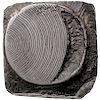Woodblock Printing Plates Astronomical Images
Lot 107
Estimate:
$2,400 - $3,200
Absentee vs Live bid
Two ways to bid:
- Leave a max absentee bid and the platform will bid on your behalf up to your maximum bid during the live auction.
- Bid live during the auction and your bids will be submitted real-time to the auctioneer.
Bid Increments
| Price | Bid Increment |
|---|---|
| $0 | $10 |
| $200 | $20 |
| $300 | $25 |
| $500 | $50 |
| $1,000 | $100 |
| $2,000 | $200 |
| $3,000 | $250 |
| $5,000 | $500 |
| $10,000 | $1,000 |
| $20,000 | $2,000 |
| $30,000 | $2,500 |
| $50,000 | $5,000 |
| $100,000 | $10,000 |
| $200,000 | $20,000 |
| $300,000 | $25,000 |
| $500,000 | $50,000 |
About Auction
By Early American History Auctions
Jun 1, 2019
Set Reminder
2019-06-01 12:00:00
2019-06-01 12:00:00
America/New_York
Bidsquare
Bidsquare : Historic Autographs, Colonial Currency, Political Americana & Revolutionary War Era
https://www.bidsquare.com/auctions/early-american-history-auctions/historic-autographs-colonial-currency-political-americana-revolutionary-war-era-4152
Historic Autographs, Coins, Currency, Political, Americana, Historic Weaponry and Guns, John Adams, Thomas Jefferson, Early American History Auctions auctions@earlyamerican.com
Historic Autographs, Coins, Currency, Political, Americana, Historic Weaponry and Guns, John Adams, Thomas Jefferson, Early American History Auctions auctions@earlyamerican.com
- Lot Description
Colonial America
Three Rare Early Colonial America Woodblock Illustration Printing Plates
c. 1701-1756 Era, Early Colonial America, Woodblock Printing Plates by Bartholomew Green, Andrew Bradford, John Holt & Other Colonial Printers, Lot of (3) Woodblocks, each Very Fine.
These three historic, original Woodblock Printing Illustration Plates produce images that depict astronomical events and served as illustrations for almanacs of the period, as indicated by Elizabeth Reilly in "Colonial American Printers' Ornaments & Illustrations" (1975). Each of these woodblocks were used to create illustrations similar to those reproduced in Reilly's book. Many of the original Colonial prints, almanacs or pamphlets are contained in such historic and major collections such as belong to the American Antiquarian Society in Worcester (MA), the Massachusetts Historical Society in Boston, and the Henry E. Huntington Library in San Marino, Ca.
1. Partial moon eclipse with inscribed eyes, nose, and smiling mouth, Reilly #1918, page 474, by Bartholomew Green and John Allen, Boston, 1701. 3/4" round x 1" thick, clean surface, paper slip with typed notation identifying similar image found in Reilly is affixed to its side.
2. A Crescent on a Dark Moon with Inscribed Bands, Reilly #1947, page 477, by Andrew Bradford, Philadelphia, 1738. It measures 1.25" square x 3/4" thick, with dark inked surface patina.
3. Moon Eclipsed against a larger Sun, with a light-rimmed border, Reilly #1960, p. 479, by James Parker, John Holt, and Thomas Green, New Haven, 1756. 1" x 1" x 3/4" thick, with dark inked surface patina, and typed notation with Reilly references affixed to the bottom of the woodblock. Ex: Sotheby's Parke, Bernet Auction, Sale 7683, June 26, 2001 (no insert tag).
(3 woodblocks)
Bartholomew Green (1666-1732) was the son of colonial printer Samuel Green. He inherited his father's press in Cambridge in 1692 and moved it to Boston. He had the patronage of the government and of Harvard and became the foremost printer in New England. Except for four years Green printed the Boston News-Letter, the first American newspaper, from its inception in 1704 until his death. In 1722 he became its publisher also. His son-in-law, John Draper, succeeded to the News-Letter.
Andrew Bradford (1686-1742) was one of the sons of William Bradford, (1663-1752), a British pioneer printer in the American colonies who emigrated to Philadelphia and set up the first press in 1685.
James Parker (1714-1770) established the first permanent press in New Jersey in 1754. Parker served an apprenticeship under William Bradford in New York but "ran away" before his service was up. For a while, he took refuge under Ben Franklin's roof in Philadelphia. He was New York's public printer from 1744-1752, which gave him all the government publications printing jobs. In 1753 he entered a partnership with his former employee, William Weyman, in New York. In 1758 Parker was given the title Government Printer for New Jersey, and later King's Printer for New Jersey, a title he held until his death in 1770.
John Holt (1721-1784) edited the first Whig newspaper published in New York City, and managed it with considerable ability and courage. In 1774 Holt discarded the king's arms from the heading of his paper, substituting the design of a serpent cut in pieces, with the expressive motto, "Unite or die." In January, 1775, the snake w as untied and coiled with the tail in its mouth, forming a double ring.
- Shipping Info
-
Early American provides in-house worldwide shipping. Please contact us directly if you have questions about your specific shipping requirements.
-
- Buyer's Premium



 EUR
EUR CAD
CAD AUD
AUD GBP
GBP MXN
MXN HKD
HKD CNY
CNY MYR
MYR SEK
SEK SGD
SGD CHF
CHF THB
THB













